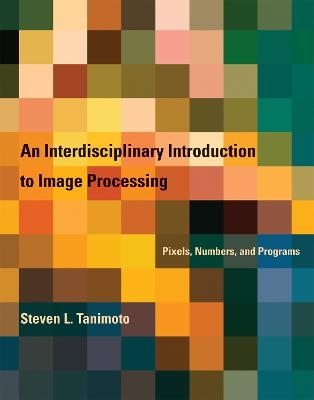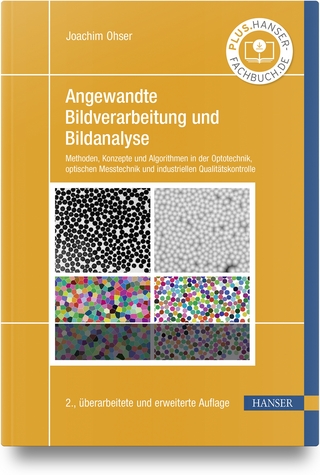
An Interdisciplinary Introduction to Image Processing
Pixels, Numbers, and Programs
Seiten
2012
MIT Press (Verlag)
978-0-262-01716-9 (ISBN)
MIT Press (Verlag)
978-0-262-01716-9 (ISBN)
- Keine Verlagsinformationen verfügbar
- Artikel merken
Basic principles of image processing and programming explained without college-level mathematics.
This book explores image processing from several perspectives: the creative, the theoretical (mainly mathematical), and the programmatical. It explains the basic principles of image processing, drawing on key concepts and techniques from mathematics, psychology of perception, computer science, and art, and introduces computer programming as a way to get more control over image processing operations. It does so without requiring college-level mathematics or prior programming experience. The content is supported by PixelMath, a freely available software program that helps the reader understand images as both visual and mathematical objects.
The first part of the book covers such topics as digital image representation, sampling, brightness and contrast, color models, geometric transformations, synthesizing images, stereograms, photomosaics, and fractals. The second part of the book introduces computer programming using an open-source version of the easy-to-learn Python language. It covers the basics of image analysis and pattern recognition, including edge detection, convolution, thresholding, contour representation, and K-nearest-neighbor classification. A chapter on computational photography explores such subjects as high-dynamic-range imaging, autofocusing, and methods for automatically inpainting to fill gaps or remove unwanted objects in a scene. Applications described include the design and implementation of an image-based game.
The PixelMath software provides a "transparent" view of digital images by allowing the user to view the RGB values of pixels by zooming in on an image. PixelMath provides three interfaces: the pixel calculator; the formula page, an advanced extension of the calculator; and the Python window.
This book explores image processing from several perspectives: the creative, the theoretical (mainly mathematical), and the programmatical. It explains the basic principles of image processing, drawing on key concepts and techniques from mathematics, psychology of perception, computer science, and art, and introduces computer programming as a way to get more control over image processing operations. It does so without requiring college-level mathematics or prior programming experience. The content is supported by PixelMath, a freely available software program that helps the reader understand images as both visual and mathematical objects.
The first part of the book covers such topics as digital image representation, sampling, brightness and contrast, color models, geometric transformations, synthesizing images, stereograms, photomosaics, and fractals. The second part of the book introduces computer programming using an open-source version of the easy-to-learn Python language. It covers the basics of image analysis and pattern recognition, including edge detection, convolution, thresholding, contour representation, and K-nearest-neighbor classification. A chapter on computational photography explores such subjects as high-dynamic-range imaging, autofocusing, and methods for automatically inpainting to fill gaps or remove unwanted objects in a scene. Applications described include the design and implementation of an image-based game.
The PixelMath software provides a "transparent" view of digital images by allowing the user to view the RGB values of pixels by zooming in on an image. PixelMath provides three interfaces: the pixel calculator; the formula page, an advanced extension of the calculator; and the Python window.
Steven L. Tanimoto is Professor of Computer Science and Engineering at the University of Washington.
| Reihe/Serie | An Interdisciplinary Introduction to Image Processing |
|---|---|
| Zusatzinfo | 38 color illus., 137 b&w illus. |
| Verlagsort | Cambridge, Mass. |
| Sprache | englisch |
| Maße | 178 x 229 mm |
| Gewicht | 1043 g |
| Themenwelt | Informatik ► Grafik / Design ► Digitale Bildverarbeitung |
| Mathematik / Informatik ► Informatik ► Programmiersprachen / -werkzeuge | |
| ISBN-10 | 0-262-01716-4 / 0262017164 |
| ISBN-13 | 978-0-262-01716-9 / 9780262017169 |
| Zustand | Neuware |
| Haben Sie eine Frage zum Produkt? |
Mehr entdecken
aus dem Bereich
aus dem Bereich
Modelle für 3D-Druck und CNC entwerfen
Buch | Softcover (2022)
dpunkt (Verlag)
34,90 €
Methoden, Konzepte und Algorithmen in der Optotechnik, optischen …
Buch | Hardcover (2024)
Hanser (Verlag)
39,99 €
alles zum Drucken, Scannen, Modellieren
Buch | Softcover (2024)
Markt + Technik Verlag
24,95 €


